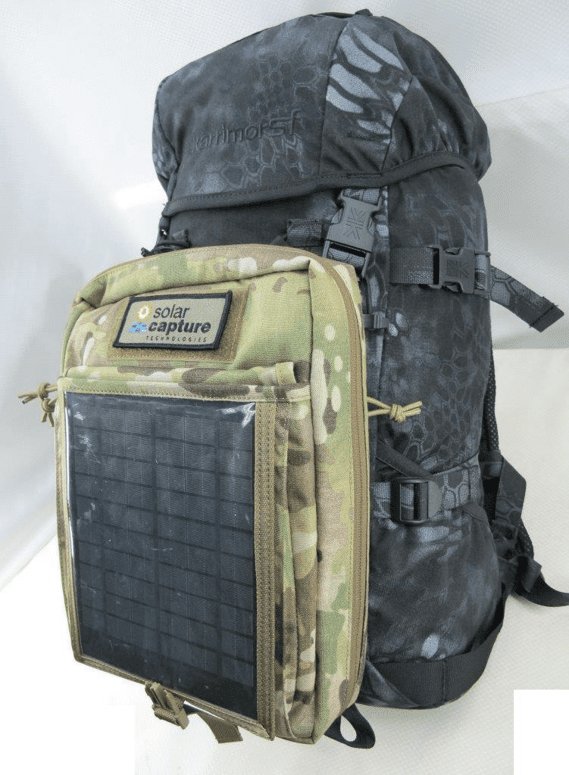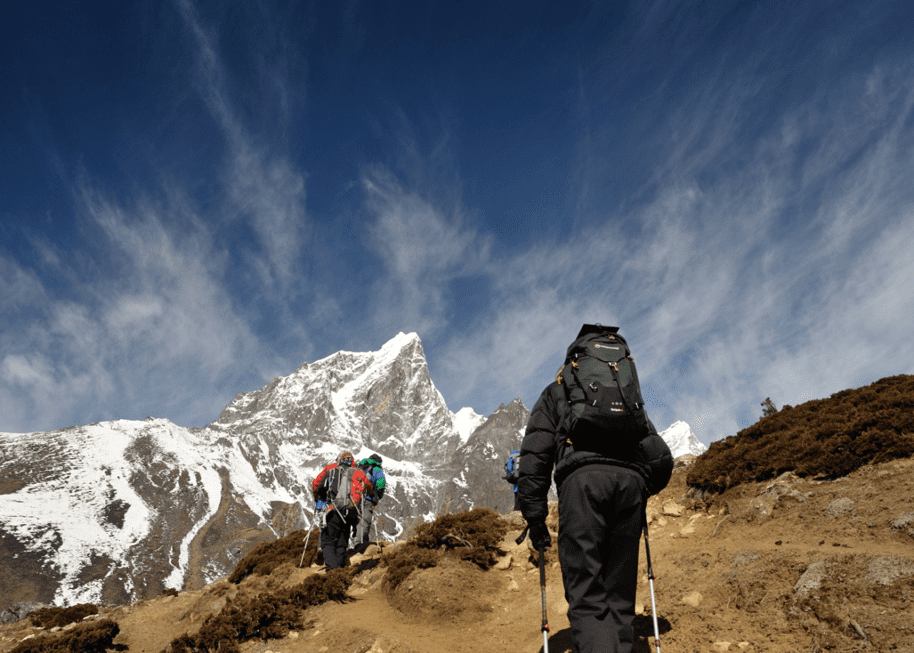Solar Expedition Equipment, Rugged 5 Watt, Solar Capture Technologies solar module, constructed from a lightweight robust aluminium substrate with Teflon front film. 5200mAh power bank with integrated charge controller. Modular carry case for mobile devices including Tablets and Mobile Phones, compact integrated design for charging on the go.
In order to provide a back-up source of power the Solar Capture Technologies Rugged Solar Charging Unit was taken on a 15 day trek to Everest base camp. The charger was used, especially at the more remote and higher altitude points, to ensure that phone charge could be maintained. The Rugged Solar Charging Unit could easily be attached and detached from the roof of the rucksack.
The trek started from Lukla airport at an altitude of 2850 meters in pleasant conditions with bright sunshine and daytime temperatures of 20oC. It was known that at the lower altitudes charging points in accommodation was readily and freely available. So the Rugged Solar Charging Unit was detached from the rucksack and stowed in the day bag to be transported via Yak to the next lodge. This required the system to be very robust as these Yak caravans can dish out some fairly rough treatment to their loads!
After surviving 6 days of transport via this method the robust PV panel was still fully intact. The altitude was now at 3800 meters and electricity points at the more basic accommodation were becoming scarce and charging a fee for use, also as the lodges were full of tourists charging would often involve a long wait for access to an electricity point. The Rugged Solar Charging Unit was therefore called upon to ensure dwindling phone power could be maintained. The Rugged Solar Charging Unit has two outlet points, so a friend or second device can benefit too, and can provide two full charges to an I-phone when the system is fully charged.
As the trek continued, ever greater heights were being achieved and accommodation standards were becoming more basic every day. From altitudes of 4300 meters teahouses provided the shelter. The rooms in the teahouses are unheated and night time temperatures were falling well below zero, down to the region of -20oC. The battery held its charge without problem and the solar panel showed no signs of moisture ingress or cracking, and was still performing as expected. The highest point of the trek was achieved a day after reaching Everest base camp, when the peak of the mountain Kala Patter at 5,545 meters was reached with the Rugged Solar Charging Unit still performing as expected.
From Kala Patter the trek rapidly descends from 5,545 meters back down to Lukla at 2850 meters in only 3 days, again the Rugged Solar Charging Unit coped admirably with this rapid change in conditions from the lows of -20oC to the highs of +20oC. All in all I can safely say the Rugged Solar Charging Unit proved a very useful power source for keeping the phone nicely charged during the course of the trip. The phone was under more pressure than usual due to poor phone reception areas, low quality WiFi and of course using the camera to take in the epic scenery, all of which served to drain the battery more than being at home. So knowing I had a back-up which provided more than enough power and could be readily re-charged during the trek the next day, meant I didn’t have to cut back on valuable phone usage.





